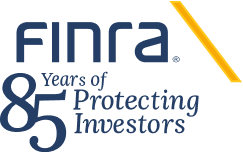Please approve the new rules to tighten up short interest reporting requirements. There are too many loopholes that short traders use to hide and obfuscate their true short interest (eg hiding shorts in deep OTM put contracts) which puts retail traders at an information disadvantage, which is anathema to free market principles.
The Private Placements topic of the 2025 FINRA Annual Regulatory Oversight Report (the Report) informs member firms’ compliance programs by providing annual insights from FINRA’s ongoing regulatory operations, including (1) regulatory obligations, (2) findings and effective practices, and (3) additional resources.
ACTION REQUIRED
Broker/Dealer and Investment Adviser Renewal Program
Payment Deadline: December 6, 2002
SUGGESTED ROUTING
KEY TOPICS
Executive Representatives
Legal & Compliance
Operations
Registered Representatives
Registration
Senior
Summary
FINRA warns member firms of an ongoing phishing campaign that involves fraudulent emails (see sample in Appendix) purporting to be from FINRA and using one of at least three imposter FINRA domain names:
“@finrar-reporting.org”
“@Finpro-finrar.org”
“@gateway2-finra.org”
The email asks the recipient to click a link to “view request” and provide information to “complete” that request
FINRA 21-19 is a long overdue change. It is clear that the integrity of the United States market has been strained to the edge of disaster, in large part due to systemic risk developed under the regulatory authority of FINRA's outdated short interest reporting policy. I understand FINRA is attempting to create a fairer and transparent market but without strict reporting policies in place you
Accurate short sale tracking is obviously important, but it’s only as useful as the information given on dark pool activities. Dark pool existence, and how those exchanges are able to integrate shares into major exchanges is beyond fraudulent. I appreciate your efforts, but share selling will never be put into check until dark pools are eliminated.
This User Support page provides links to help and training resources for users of CRD. Listed below are a variety of user support documentation created to provide CRD users with assistance that ranges from high-level overview to step-by-step detailed instructions.
SUGGESTED ROUTING:*
Senior ManagementInternal AuditLegal & Compliance*These are suggested departments only. Others may be appropriate for your firm.
EXECUTIVE SUMMARY
The Securities and Exchange Commission (SEC) in Release No. 34-30929 has announced the adoption of new temporary Rules 17h-1Tand 17h-2T establishing a risk assessment recordkeeping and reporting system for broker/
Its a slippery slope to begin restricting individual Americans from their own poor choices with consequences. Its how we learn & a paternalistic approach retards that learning. When you begin taking away freedoms in a free country, pretty soon anything could be on the chopping block. Instead, how about some nudges toward good choices from our SEC to inform & educate the
I do not trust government officials to be making these restrictions/regulations on us. It does not pass the smell test, it may well be proposed for nefarious political purposes.
Another suspicious circumstance is that the Mail informing o of this development arrived this afternoon, 5/9/22, and saying the deadline was today, 5/9/22. Hmmm, I wonder what that might be about? It is right now 7:
